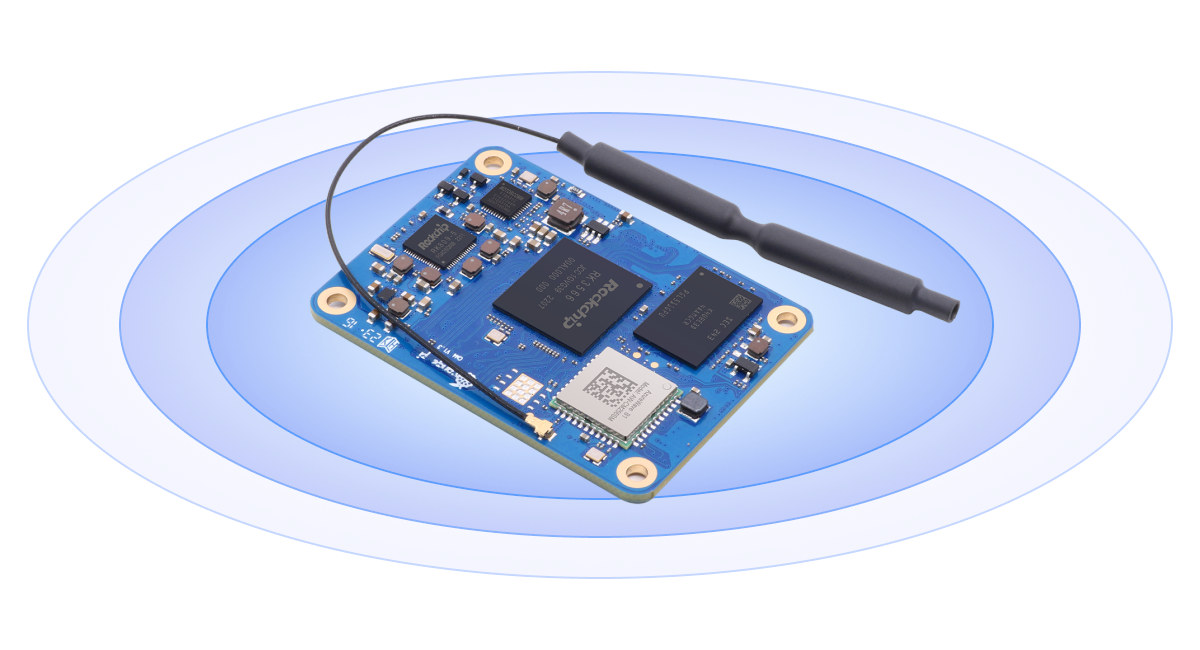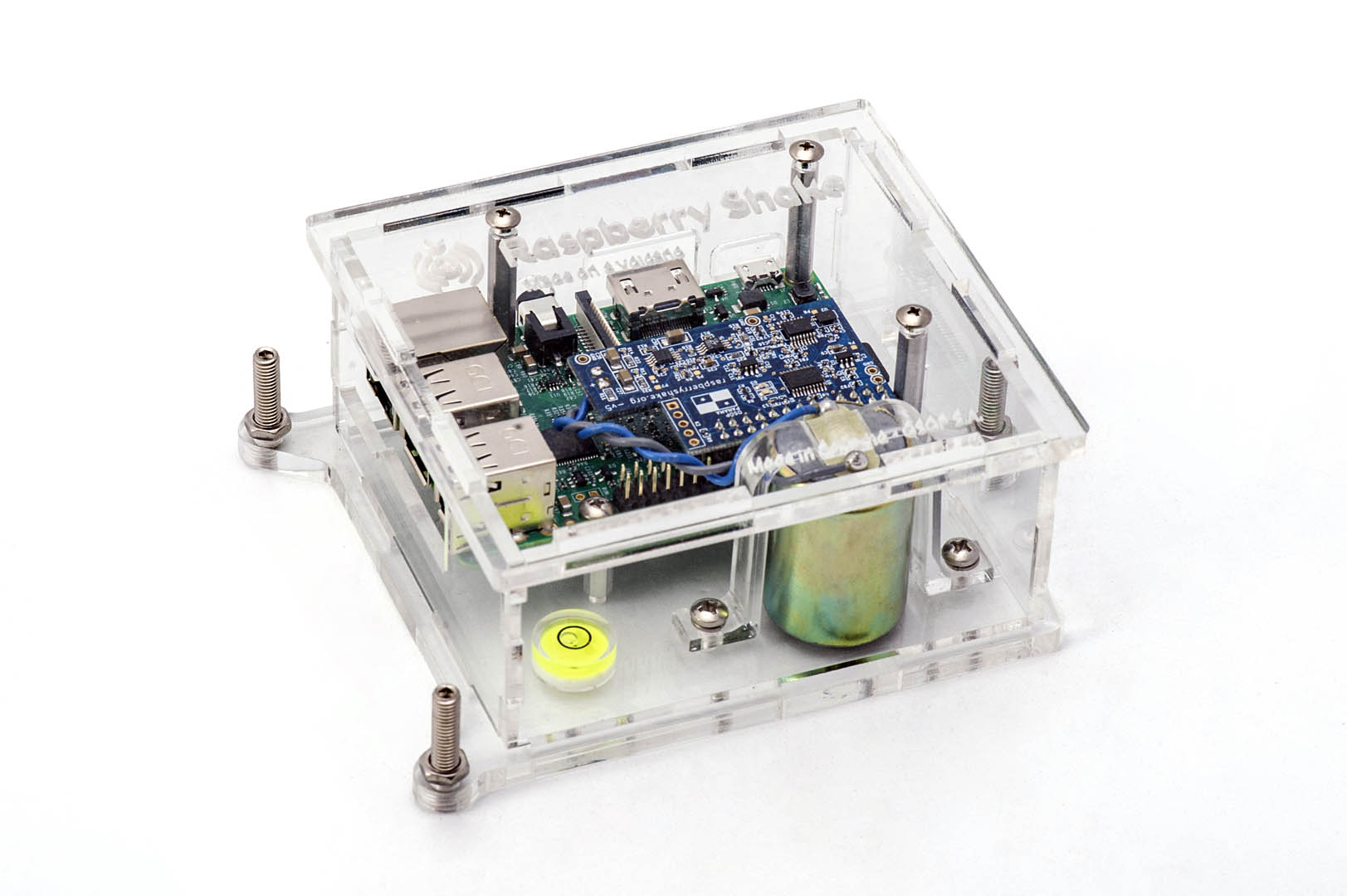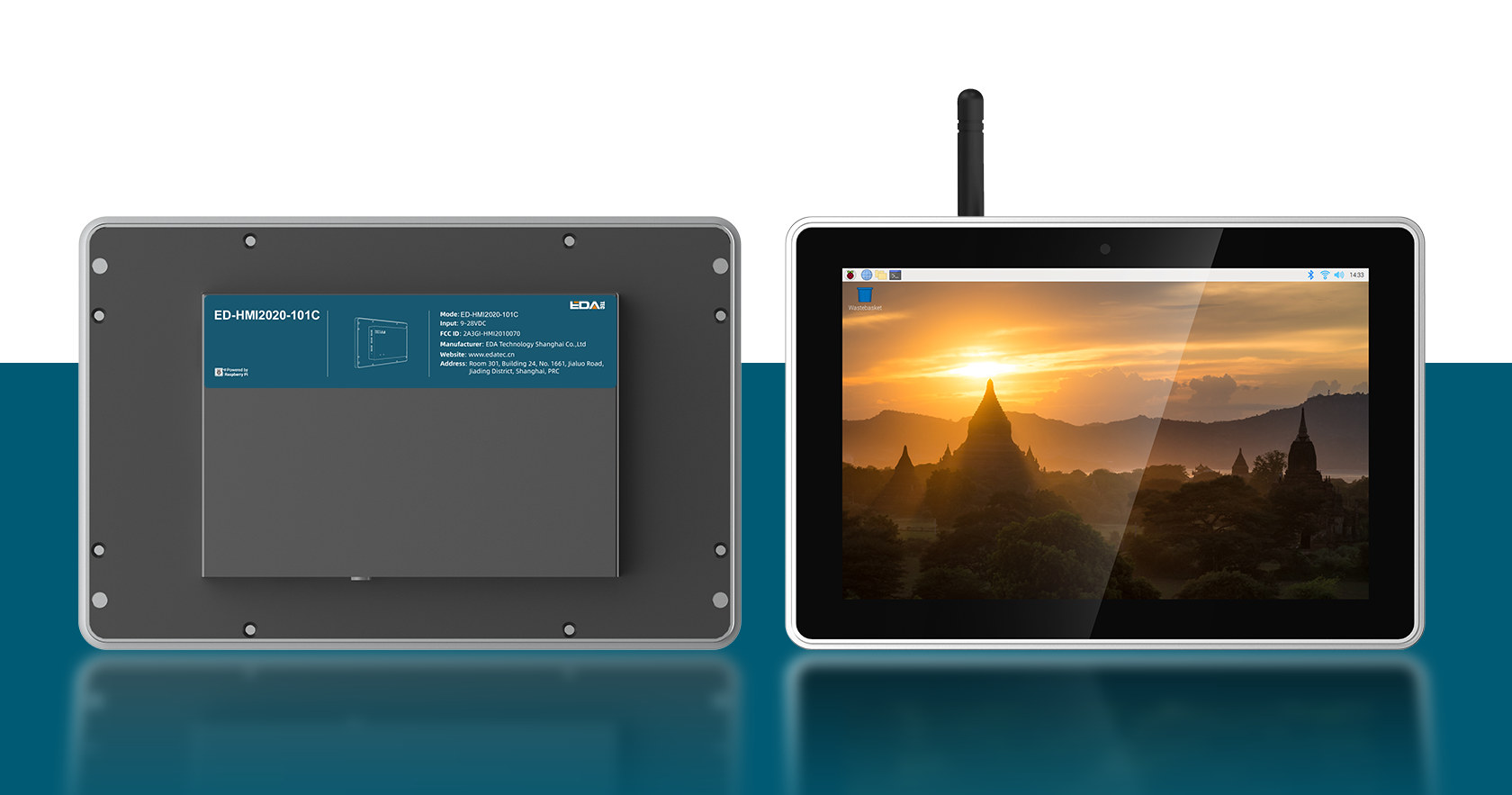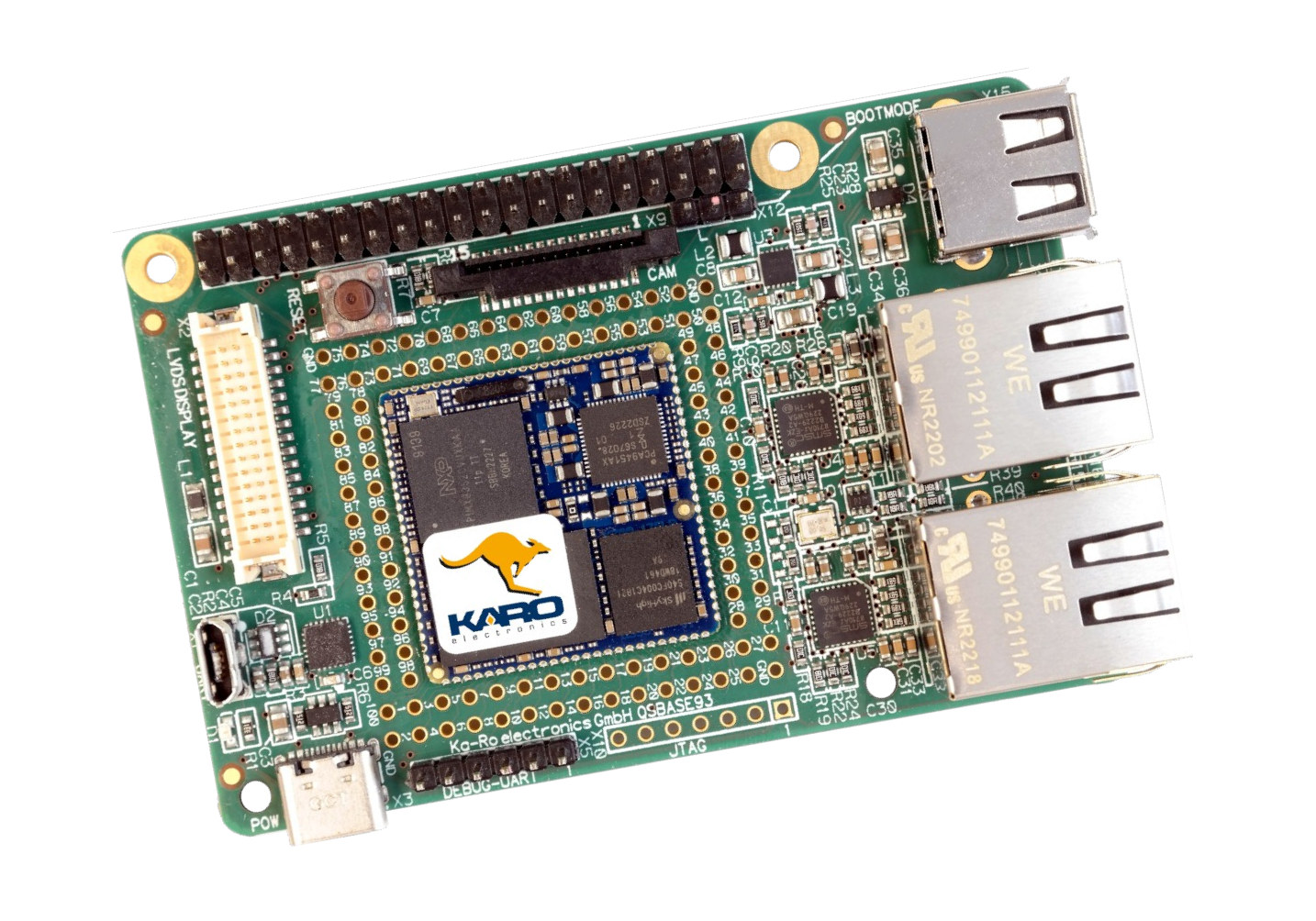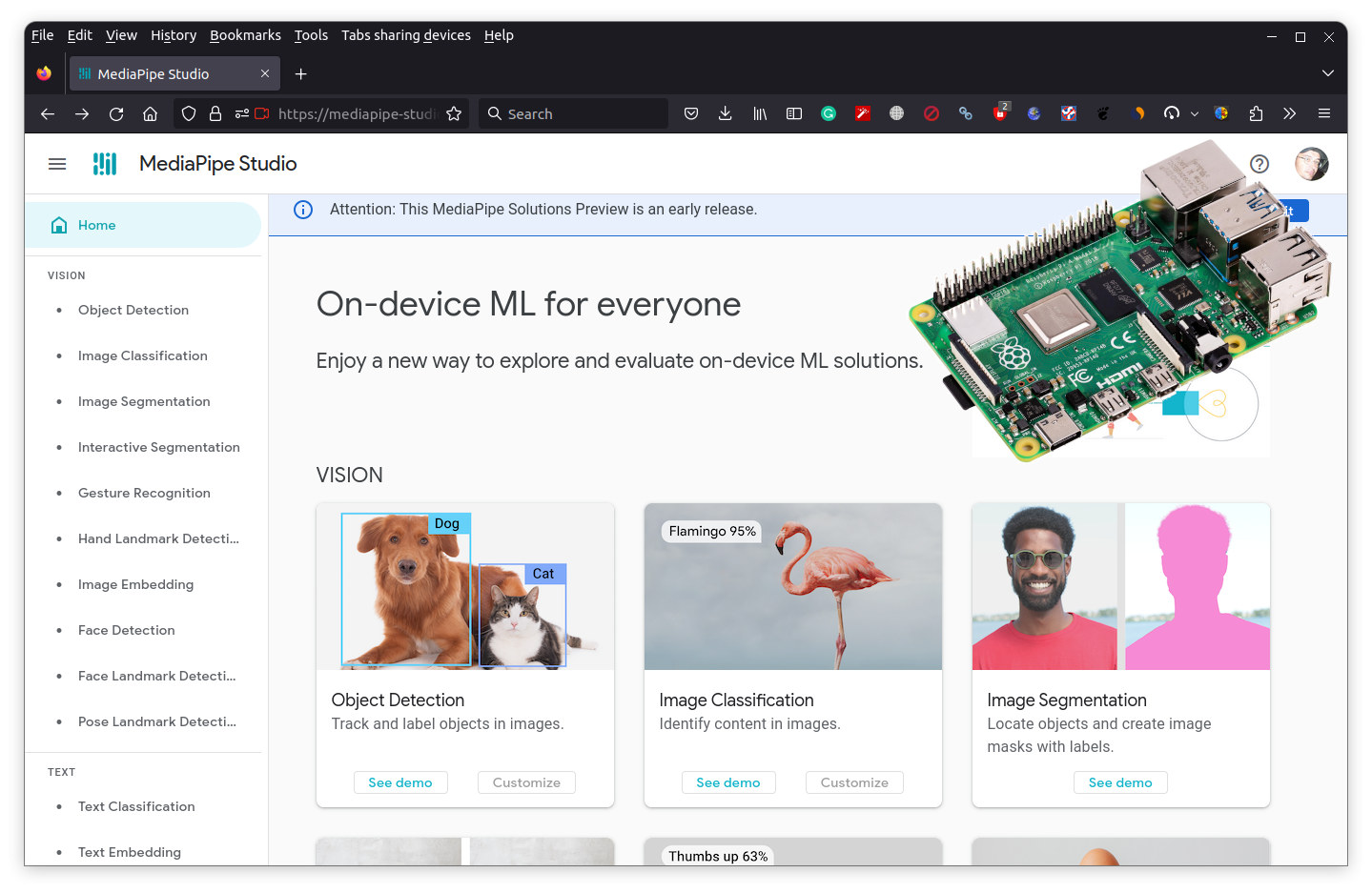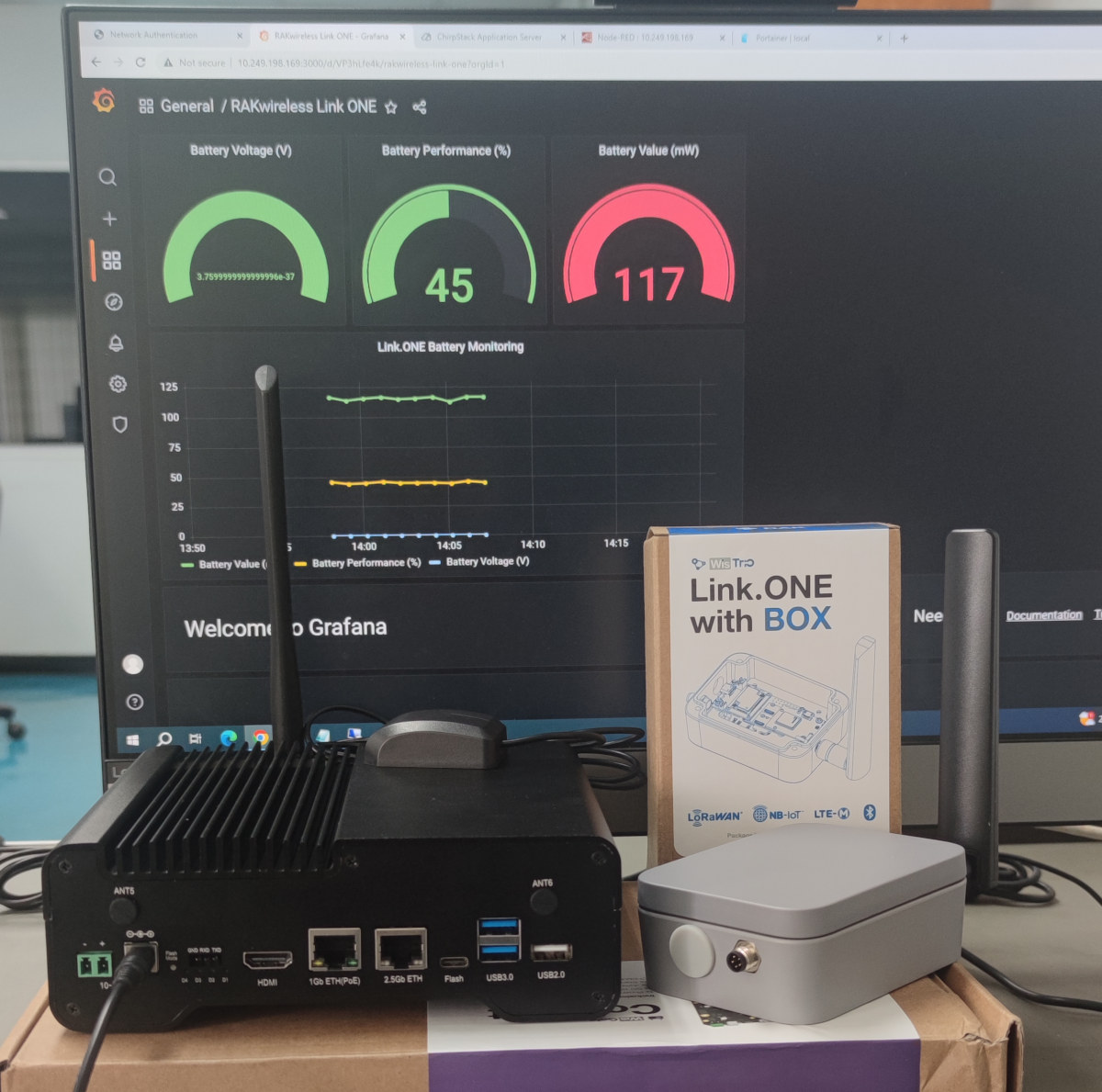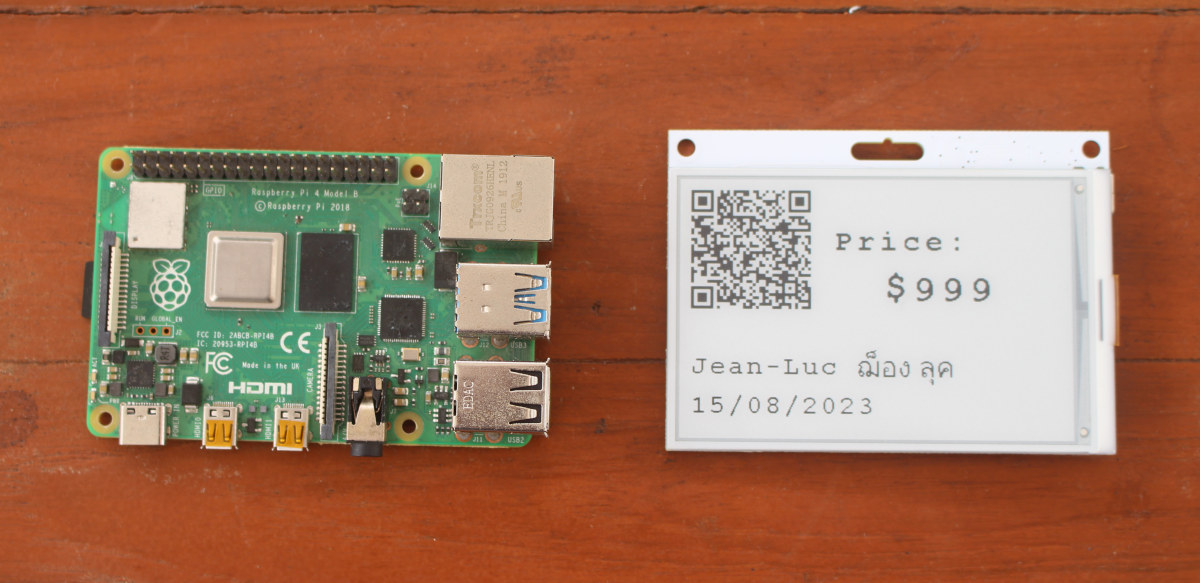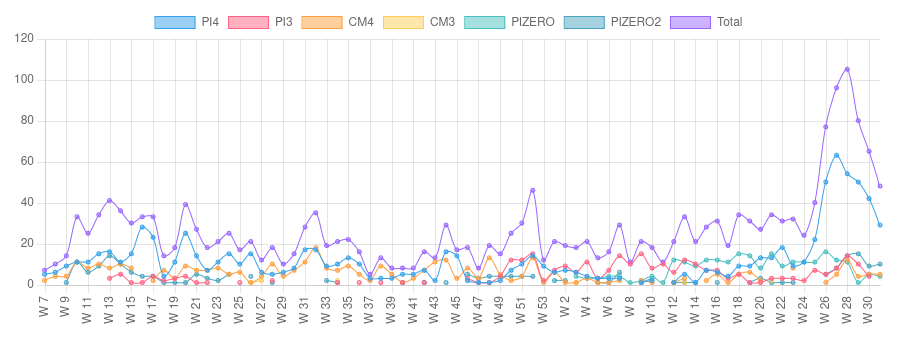Orange Pi Compute Module 4 is a system-on-module mechanically and electrically compatible with the Raspberry Pi CM4, but powered by a Rockchip RK3566 quad-core Arm Cortex-A55 AI processor just like the Radxa CM3 introduced a few years ago, or more recently the Banana Pi BPI-CM2 (RK3568). The new module, also called Orange Pi CM4 for shorts, comes with 1GB to 8GB RAM, 8GB to 128GB eMMC flash, and an optional 128/256MBit SPI flash, as well as a Gigabit Ethernet PHY and on-board WiFi 5 and Bluetooth 5.0. It comes with the two 100-pin high-density connectors found on the Raspberry Pi CM4, and a smaller 24-pin connector for extra I/Os. Orange Pi Compute Module 4 specifications: SoC – Rockchip RK3566 quad-core Arm Cortex-A55 processor @ 1.8 GHz with Arm Mali-G52 2EE GPU, 0.8 TOPS AI accelerator, 4Kp60 H.265/H.264/VP9 video decoding, 1080p100f H.265/H.264 video encoding System Memory – 1GB, 2GB, 4GB, or […]
Raspberry Shake HAT brings earthquake monitoring to the Raspberry Pi SBC
Raspberry Shake is a family of Raspberry Pi HATs and full seismograph and infrasound monitors designed to enable earthquake monitoring on the popular single board computer Raspberry Pi Shake and Boom (for acoustic monitoring) HATs have been around for a few years, but I only learned about it now through an article on The MagPi Magazine where Branden Christensen, Business Steward, and Mike Hotchkiss, Marketing Director, were interviewed, so I decided to have a closer look. Four main models of the Raspberry Shake are available: RS1D vertical motion seismograph with a single motion velocity sensor to detect earthquakes RS3D vertical & lateral motion seismograph with one vertical & two lateral motion velocity sensors to measure earthquakes of all magnitudes RS4D “strong motion seismograph with one vertical motion velocity sensor to detect earthquakes, plus one extra vertical and two lateral accelerometer sensors for powerful earthquakes RS&BOOM seismograph & infrasound monitor that […]
EDATEC ED-HMI2020-101C – A 10.1-inch Raspberry Pi CM4-based industrial panel PC
EDATEC has launched yet another Raspberry Pi CM4-based platform for industrial applications with the ED-HMI2020-101C 10.1-inch panel PC with 1280×800 resolution, 9V to 28V wide power input, and support for an optional “extended display” via an HDMI FPC cable that also carries USB/I2C signal for the touchscreen. The system comes with up to 8GB RAM, 32GB eMMC flash, Gigabit Ethernet, optional WiFi 5 and Bluetooth 5.0, built-in stereo speakers, several other audio interfaces, as well as a 40-pin GPIO header for expansion. EDATEC ED-HMI2020-101C specifications: System-on-Module (SoM) – Raspberry Pi CM4 SoC – Broadcom BCM2711 CPU – Quad-core Cortex-A72 processor @ 1.5GHz GPU – VideoCore VI conformant with OpenGL ES 3.1 & Vulkan 1.2 VPU 4Kp60 H.265 video decoder 1080p60 H.264 video decoder 1080p30 H.264 video encoder System Memory – 1GB, 2GB, 4GB, 8GB LPDDR4-3200 SDRAM Storage – 8GB, 16GB, 32GB eMMC flash Wireless – Optional WiFi 5 and Bluetooth […]
Tiny solder-down NXP i.MX 93 System-on-Module powers credit card-sized evaluation board
Ka-Ro Electronics’ QS93 is a tiny solder-down NXP i.MX 93 System-on-Module (SoM) running Linux and designed for edge processing. The company also offers a credit card-sized evaluation board that may remind some of the Raspberry Pi with its GPIO header and general layout, but it comes with two Fast Ethernet ports and one USB 2.0 port. We’ve already covered several system-on-modules based on the NXP i.MX 93 Cortex-A55/M33 AI processor including some with high-density board-to-board connectors such as the Compulab UCM-IMX93 and Forlinx FET-MX9352-C, others with a SO-DIMM connector like the VAR-SOM-MX93, and finally some designed to be soldered on the carrier board such as the OSM-L compatible iW-RainboW-G50M, and the QS93 adds to the latter category in a tiny 27×27 mm form factor. Ka-Ro electronics QS93 specifications: SoC – NXP i.MX 93 with CPU – Up to dual-core Cortex-A55 processor @ up to 1.5 GHz Real-time core – Arm […]
MediaPipe for Raspberry Pi released – No-code/low-code on-device machine learning solutions
Google has just released MediaPipe Solutions for no-code/low-code on-device machine learning for the Raspberry Pi (and an iOS SDK) following the official release in May for Android, web, and Python, but it’s been years in the making as we first wrote about the MediaPipe project back in December 2019. The Raspberry Pi port is an update to the Python SDK and supports audio classification, face landmark detection, object detection, and various natural language processing tasks. MediaPipe Solutions consists of three components: MediaPipe Tasks (low-code) to create and deploy custom end-to-end ML solution pipelines using cross-platform APIs and libraries MediaPipe Model Maker (low-code) to create custom ML models MediaPipe Studio (no-code) webpage to create, evaluate, debug, benchmark, prototype, and deploy production-level solutions. You can try it out directly in your web browser at least on PC and I could quickly test the object detection on Ubuntu 22.04. MediaPipe Tasks can be […]
Setting up a private LoRaWAN network with WisGate Connect gateway
In this guide, we’ll explain how to set up a private LoRaWAN network using the Raspberry Pi CM4-based RAKwireless’ WisGate Connect gateway and Docker or Portainer to install NodeRED, InfluxDB, Grafana, and other packages required to configure our gateway. The WisGate Connect is quite a versatile gateway with Gigabit and 2.5Gbps Ethernet plus several optional wireless connectivity options such as LoRaWAN, 4G LTE, 5G, WiFi 6, Zigbee, WiFi HaLoW, and more that can be added through Mini PCIe or M.2 sockets, expansion through WisBlock IO connectors and a 40-pin Raspberry Pi HAT connector. We’ll start by looking at the gateway features in detail, but if you already know all that, you can jump to the private LoRaWAN network configuration section. WisGate Connect unboxing, specifications, and teardown RAKwireless sent us a model with a Raspberry Pi CM4 equipped with 4 GB of RAM and 32 GB of eMMC memory, GPS and […]
Mini review of GGtag e-paper display programmable through sound or USB serial
GGtag is a 3.52-inch e-paper display based on the Raspberry Pi RP2040 microcontroller and programmable through sound or USB serial from your web browser, plus it also supports emulation of 125 kHz RFID tags (ASK and FSK). When Radoslav Gerganov contacted me about the upcoming Crowd Supply campaign for the GGtag e-paper badge, I happened to have just discussed using an e-paper display to sell some samples on Facebook Groups where requirements include using the seller’s name and date in the photos. So I asked for a sample if any were available, and I just received it today… GGTag specifications: MCUs Raspberry Pi RP2040 dual-core Cortex-M0+ microcontroller @ 133 MHz with 264KB SRAM Microchip ATtiny85 8-bit AVR microcontroller (used for RFID) Storage – 2 MB flash Display – 3.52-inc e-paper display with USB – 1x USB Type-C port for power and serial programming Sensor – PDM digital microphone for data-over-sound […]
Chart confirms higher level of Raspberry Pi restocks
Earlier this month, we noted that Raspberry Pi supplies were improving mostly from tweets from Eben Upton who provided data about shipped boards since the beginning of the year. But there are also third-party data that confirm this since RPILocator provides statistics for restocks of Raspberry Pi hardware from approved resellers. The chart below shows weekly data of restocks since January 2022 until today, and we can clearly see a jump in restocks in recent weeks, especially for the Raspberry Pi 4, so there’s no need to steal old boards from discarded scooters anymore 😉 The ramp-up really started on week 25 (June 19-25) and peaked on week 28 (July 10-16) possibly to fill back orders, and restocks have been going down in recent weeks but still at a higher level than previously. While the improvement is mostly visible for the Pi 4, the Raspberry Pi 3 and Raspberry Pi […]


